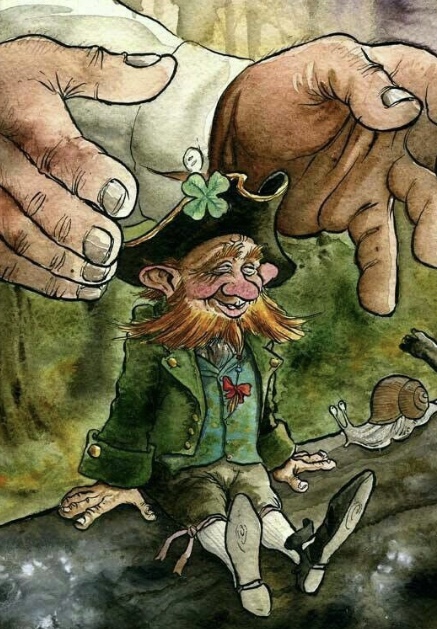The History Behind St. Patrick’s Day
March 19, 2020



First off, St. Patrick wasn’t Irish. Know as the Patron Saint of Ireland, he was actually born in a town of Roman Britain, Banna Venta Berniae. St. Patrick wasn’t much of a believer of Christianity despite his father’s position as deacon of a small Christian church. He eventually chose to convert after being captured by Irish pirates and forced into slavery at the age of 16 for 6 years. When Patrick tried escaping to Britain, he was intercepted by the French but soon enough he was released back to Britain where he continued to study Christianity. Later he claimed to have had a vision telling him to bring Christianity to the Irish people. However, his preaching was not welcomed, so he had to make due on an off coast island until he had enough followers to move back to the mainland to spread his faith. There St. Patrick ordained new priests, converted sons of kings in the region, baptized thousands of people, and aided in the construction of over 300 churches.
As far as the legends that surround St. Patrick, he did not banish all the snakes from Ireland due the fact there were never any snakes on the island to begin with. On the other side, it might very well be true that St. Patrick is behind the popularity of shamrocks. They say St. Patrick used the shamrock to teach the Irish the concept of the Holy Trinity. St. Patrick died on March, 17, 461 at age 76 in Saul which is why St. Patrick’s Day is celebrated every year on March 17th. Today St. Patrick’s Day has Irish heritage incorporates into the holiday. For example, wearing green isn’t just to escape pinching fingers. Back in the Irish Rebellion, the soldiers wore green as they fought against the British. Until the song “The Wearing of the Green” was sung by the soldiers, the color blue represented the holiday.
Later on, Americans added leprechauns into this tradition of wearing green in the early 1700’s. They said leprechauns would pinch anyone they saw but wearing green made them invisible to the creatures, so if on St. Patrick’s Day one wasn’t wearing green, others would pinch the person as a reminder that the leprechauns could see them.
The leprechauns come from Irish Folklore and are said to be diminutive fairies. Leprechauns are cranky tricksters who make their money as shoe makers. They the hide their profit either at the end of a rainbow or scattered around mountains and forests. They stand around 2ft tall and carry a stick known as a shillelagh to scare anyone after his gold, despite the creatures unfriendly opposition people consider catching a leprechaun and finding his gold is good luck.
St. Patrick’s Day is now celebrated around the world with parades in Montreal, New York City, London, Tokyo, Munich, Boston, Buenos Aires, Brussels, and many more places. Chicago even colors the Chicago River with environmentally safe, bright green dye to celebrate.
Just in case you were ever curious about the popular saying “Kiss me I’m Irish”, it’s really a reference to the Blarney Stone or the “Stone of Eloquence”. Located at the Blarney Castle, this stone grants luck when kissed and gives the ability to never be lost for words. If you can’t make it to Ireland to kiss the stone, convention says the next best thing is to find an Irishman.
All photos courtesy of google images
